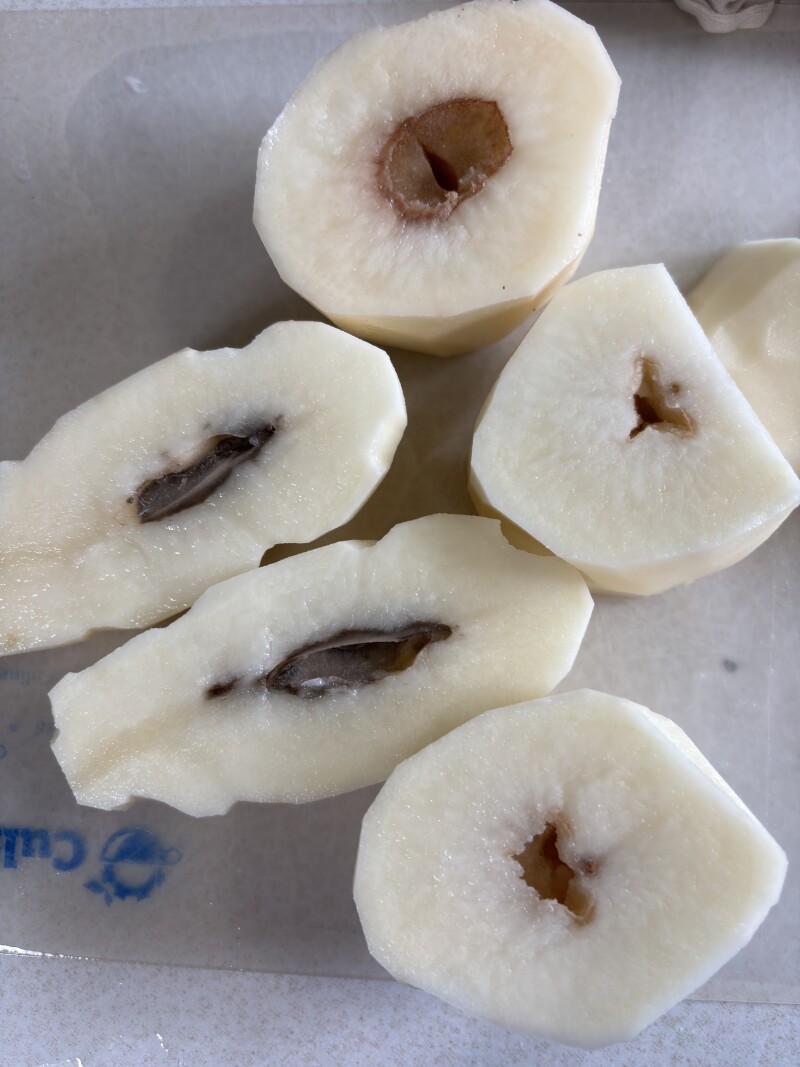Home gardeners are encountering a troubling issue this season as many potato crops are affected by a condition known as hollow heart disorder. This physiological disorder, which leads to unsightly dark centers in potatoes, has been reported by gardeners across various regions, notably impacting those who cultivate white potato varieties.
Hollow heart disorder arises from environmental factors rather than diseases or insect infestations. According to experts, this condition occurs when tubers experience rapid growth spurts, often triggered by sudden changes in moisture levels or temperature. For instance, heavy rainfall following a dry period is a common cause. The disorder is particularly prevalent in larger tubers and white or russet varieties, which are more susceptible compared to red potatoes.
Understanding Hollow Heart Disorder
The disorder manifests as internal gaps within the potato tubers, leaving them with a hollow center that can appear discolored. While this might be visually unappealing, the good news is that potatoes affected by hollow heart are still safe for consumption, provided the discolored parts are removed. Nonetheless, gardeners should be aware that these tubers tend to have a shorter storage life and may be more vulnerable to secondary rot, which can complicate long-term storage.
Experts emphasize the importance of maintaining consistent soil moisture levels to prevent the onset of hollow heart. Mulching is recommended as an effective method to help regulate moisture, particularly during mid-summer when tubers are developing rapidly.
Additional Gardening Concerns
In addition to potato issues, gardeners often face challenges in protecting their fruit trees, especially during the winter months. Wrapping tree trunks is essential to prevent winter sunscald, which can significantly harm the longevity of trees such as apple varieties. This injury can allow fungal infections, such as black rot, to enter the trees, ultimately reducing their lifespan.
Gardeners are encouraged to use materials like burlap or cardboard to shield trunks from harsh winter sunlight. Some opt for diluted indoor water-based white paint to reflect sunlight, while specialized tree wrap products are also available at garden centers. These wraps can be easily applied, spiraling up the trunk for enhanced protection.
As the gardening season approaches its end, many are pondering when to adjust their lawn mowing practices. Lowering the mowing height can help reduce the risk of winter snow mold and limit habitats for voles, which may create channels in the lawn beneath snow cover. Experts advise waiting until the grass has undergone several hard freezes before making these adjustments, ensuring the grass is ready to enter dormancy.
For those with gardening inquiries, Don Kinzler of the NDSU Extension-Cass County is available for guidance. As the gardening community continues to address these challenges, sharing experiences can help cultivate better practices and healthier crops.
